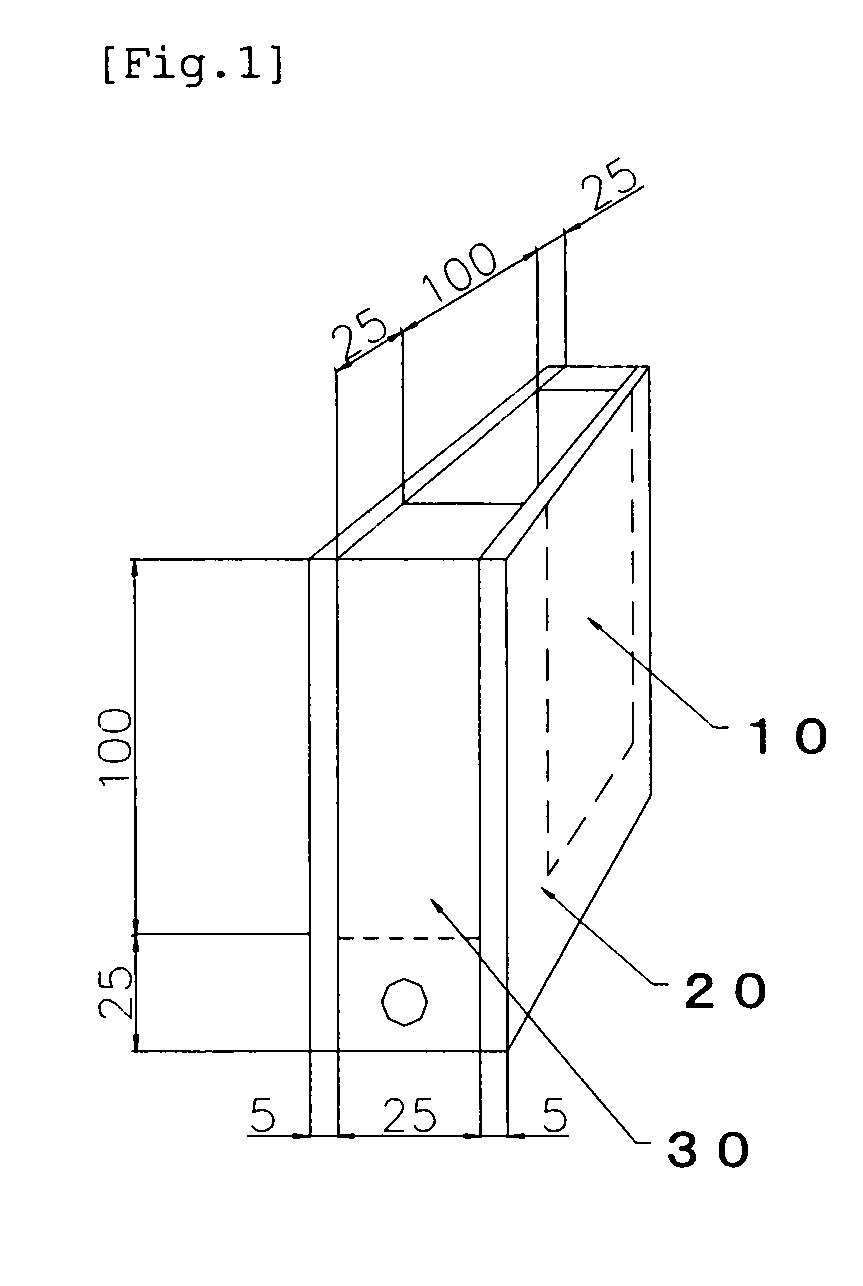Modified asphalt and two-component resin composition
a technology of resin composition and modified asphalt, which is applied in the direction of roads, building components, and common separation problems, can solve the problems of compositions that are more than fifteen times as expensive as straight asphalts, and cannot be used in compositions containing polar materials, etc., and achieve excellent storage stability and mechanical strength, excellent compatibility with polar materials, and high cost performance.
- Summary
- Abstract
- Description
- Claims
- Application Information
AI Technical Summary
Benefits of technology
Problems solved by technology
Method used
Image
Examples
example 1
[0147]A viscosity depressant (B): an aromatic process oil (DIANA PROCESS OIL AC-12, manufactured by Idemitsu Kosan Co., Ltd.) (44.25 parts by weight) was placed in a steam-jacketed tank and was heated to approximately 50° C. with stirring by a high-speed dispersion mixer (1000-1500 rpm). Subsequently, an asphalt (A): a straight asphalt 40-60 (55 parts by weight) that had been temperature controlled at 100° C. beforehand was added to the tank. A mixture liquid was thus prepared.
[0148]While the mixture liquid was stirred, the liquid temperature that was approximately 75° C. was lowered to approximately 50° C. by circulating cooling water through the steam jacket. Thereafter, a copolymer (C): MALIALIM AAB-0851 (product name, a copolymer of polypropylene glycol allyl ether, maleic anhydride and styrene, manufactured by NOF CORPORATION) (0.75 part by weight) was added, followed by stirring for approximately 30 minutes. While the stirring was further continued, cooling water was circulate...
example 2
[0149]A modified blown asphalt was obtained in the same manner as in Example 1, except that a blown asphalt 20-30 was used as the asphalt (A) and the amounts of the components were changed as set forth in Table 1.
example 3
[0156]A container was sequentially charged with 30 parts by weight of the modified straight asphalt from Example 1, 13 parts by weight of an aromatic process oil as a viscosity depressant (B), 7 parts by weight of a polybutadiene diol (Poly-bd R45HT manufactured by Idemitsu Kosan Co., Ltd., number average molecular weight: 2800, a liquefied polybutadiene terminated with a primary hydroxyl group at both ends (the number of hydroxyl groups: 2)) as a polyolefin polyol (D), 8 parts by weight of a polyoxypropylene ether polyol (EXCENOL 400MP manufactured by ASAHI GLASS CO., LTD., number average molecular weight: 420, the number of hydroxyl groups: 3) as a polyether polyol (E), 40 parts by weight of dry milled heavy calcium carbonate powder (average particle diameter: 2 μm) as an extender pigment (G), and 0.01 part by weight of dibutyltin dilaurate as a crosslinking catalyst. These materials were homogeneously stirred with a high-speed dispersion mixer.
[0157]Subsequently, 2 parts by weigh...
PUM
| Property | Measurement | Unit |
|---|---|---|
| flash point | aaaaa | aaaaa |
| temperature | aaaaa | aaaaa |
| temperature | aaaaa | aaaaa |
Abstract
Description
Claims
Application Information
 Login to View More
Login to View More - R&D
- Intellectual Property
- Life Sciences
- Materials
- Tech Scout
- Unparalleled Data Quality
- Higher Quality Content
- 60% Fewer Hallucinations
Browse by: Latest US Patents, China's latest patents, Technical Efficacy Thesaurus, Application Domain, Technology Topic, Popular Technical Reports.
© 2025 PatSnap. All rights reserved.Legal|Privacy policy|Modern Slavery Act Transparency Statement|Sitemap|About US| Contact US: help@patsnap.com



